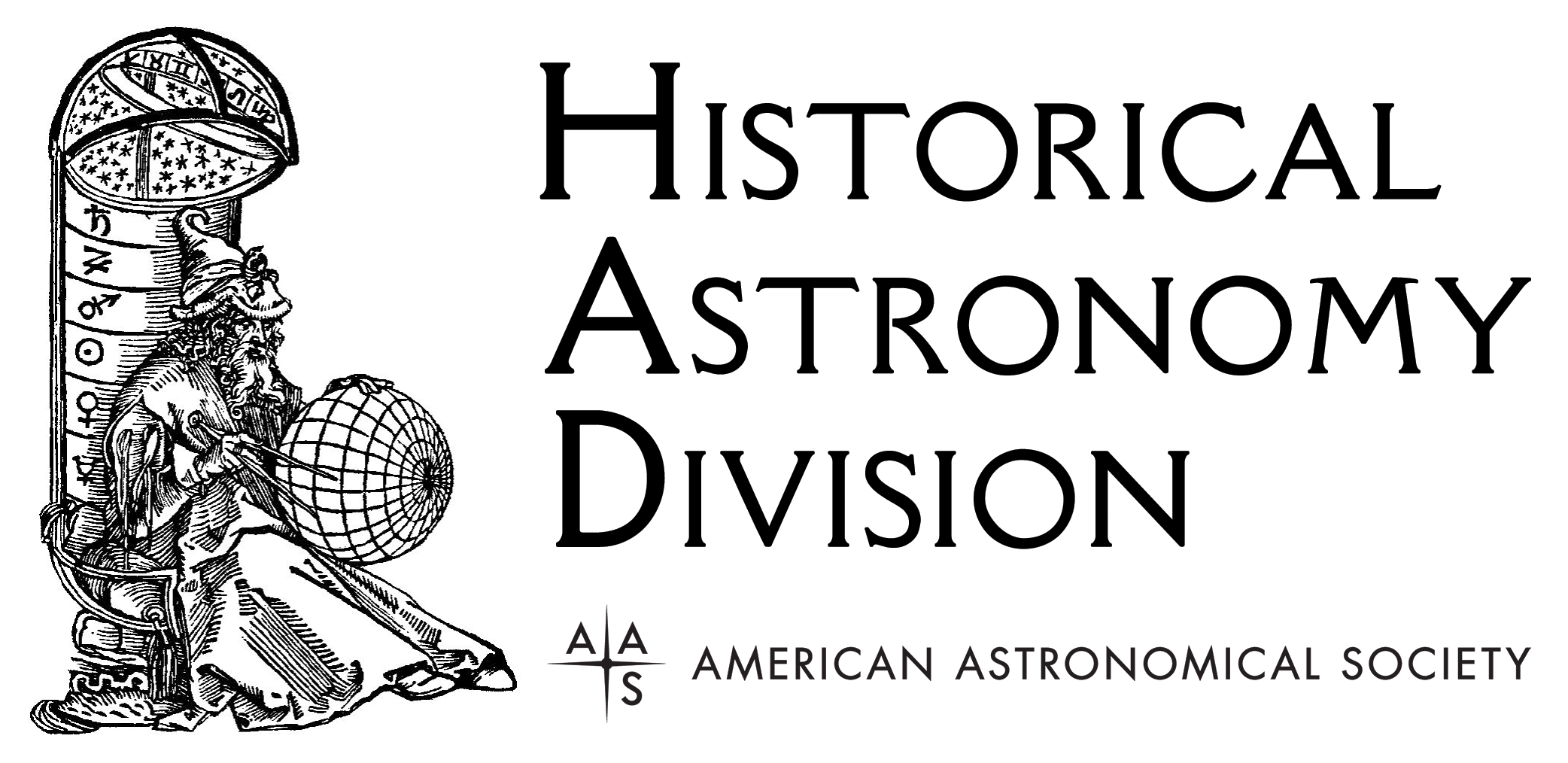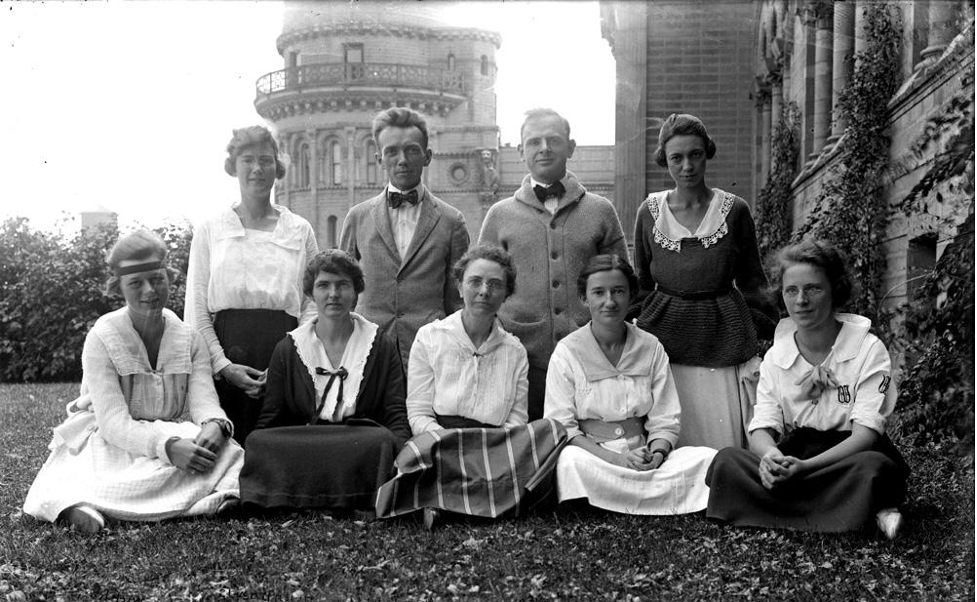This Month in Astronomical History: September 2021
Rowen Glusman, Audrey Scott, Michael Martinez, Alexis Chapman, Amanda Muratore, Jorge Sanchez, and William Cerny
Yerkes Observatory, University of Chicago
 Each month as part of this series from the AAS Historical Astronomy Division (HAD), an important discovery or memorable event in the history of astronomy will be highlighted. This month's authors, undergraduate students at the University of Chicago, write about the awarding of Harriet McWilliams Parsons' doctorate. Interested in writing a short (500-word) column? Instructions along with previous history columns are available on the HAD web page.
Each month as part of this series from the AAS Historical Astronomy Division (HAD), an important discovery or memorable event in the history of astronomy will be highlighted. This month's authors, undergraduate students at the University of Chicago, write about the awarding of Harriet McWilliams Parsons' doctorate. Interested in writing a short (500-word) column? Instructions along with previous history columns are available on the HAD web page.
Biographical Sketches of Women Working at Yerkes Observatory and Harriet McWilliams Parsons
While exploring the scientific potential and accessibility of the photographic plates stored at Yerkes Observatory,1 we began investigating the staff, specifically the female staff, who engaged with the plates. One of these trailblazing women, Harriet McWilliams Parsons, was awarded her PhD in astronomy from the University of Chicago a century ago in September 1921. She came to the university in 1916 by way of Vassar College, was then elected to the American Astronomical Society, and received a fellowship from Vassar in 1919 to support her graduate work.
At the time, a number of women worked at Yerkes as students or staff. Postgraduate work at Yerkes was especially common for Vassar graduates, probably facilitated by Professor Caroline Furness, and women performed crucial computational work on site.2 Parsons was one of a number of women at Yerkes who also carried out their own research.3,4 Parsons’ 1918 Photo-Visual Magnitudes of the Stars in the Pleiades was a masterful account of the methods of stellar photographic photometry, and it contributed to the growing realization of a physical connection between color index and luminosity.
Her dissertation (published seven years after it was submitted and accepted) employed George Ritchey’s 24-inch reflector to make precise astrometric and photometric measurements of stars to 16th magnitude in eight fields surrounding variable stars, noting trends between proper motion and magnitude. Parsons’ thesis includes a detailed description of the use of the Ritchey reflector. Her work demonstrates the significant extent to which women at Yerkes were integrated into ongoing research and telescope operations.
Parsons, who became an Instructor in Astronomy at Smith College, is just one of the women whose work at the observatory we are striving to uncover. For each individual, we have been assembling short biographical sketches and exploring the network linking them. The material we have on hand includes annual staff group photographs, generally posed on the steps of Yerkes, in which everyone is identified by name. In addition to inspecting these photographs, we are reading their scientific papers, locating the glass plates obtained from the telescopes, and investigating academic and employment records in the University of Chicago archives. We are also searching for life records, personal letters, and other information in both the archives and the public domain. We have been organizing the information by individual and looking for connections among them.
The goal of this project is to better understand the scientific programs that motivated the observations; which individuals were using the telescopes; and how the plates were taken, measured, and analyzed. Through the staff’s eyes, we hope to illuminate the intricate interpersonal dynamics of the observatory during some of its most active years. When completed, our research will have constructed a publicly accessible site to inform and inspire all readers, regardless of their fields of expertise.

Fig. 1: Yerkes Observatory staff, 1916, from left (back row): Helen N. Davis, Max Petersen, Clifford Crump, and Frances Allen; (front row): Evelyn W. Wickham, Harriet M. Parsons, Anne S. Young, Alice Hall Farnsworth, and Inez Wendell. Parsons used results from Farnsworth’s thesis (published in 1917) in her own research. Parsons and Farnsworth completed their PhDs within a few years of one another. Both women were influenced by Anne Young (to the right of Parsons), and Farnsworth eventually took over Young’s position at Mount Holyoke. (University of Chicago Photographic Archive, [apf6-00399], Special Collections Research Center, University of Chicago Library.)

Fig. 2: Yerkes Observatory staff Nora Johnson and Harriet M. Parsons (right). The photograph was taken in the summer of 1915. (University of Chicago Photographic Archive, [apf6-01306], Special Collections Research Center, University of Chicago Library.) Link to higher-quality JPG.
References
- Cerny, W. et al. (2021). "Precise photometric measurements from a 1903 photographic plate using a Commercial Scanner." Publications of the Astronomical Society of the Pacific, 133 (1022), 044501. https://doi.org/10.1088/1538-3873/abec20
- Lankford, John, and Slavings, Ricky (1997). American Astronomy: Community, Careers, and Power, 1859-1940, Chicago: University of Chicago Press.
- Parsons, Harriet McWilliams (1918). “Photovisual magnitudes of the stars in the Pleiades,” The Astrophysical Journal, 47, 38-45.
- Parsons, Harriet McWilliams (1928). “Astrometric and Photometric Statistics of Certain of Hagen's Fields Photographed with the 24-inch Reflector,” Publications of the Yerkes Observatory of the University of Chicago, 4 (7), iii-322.

